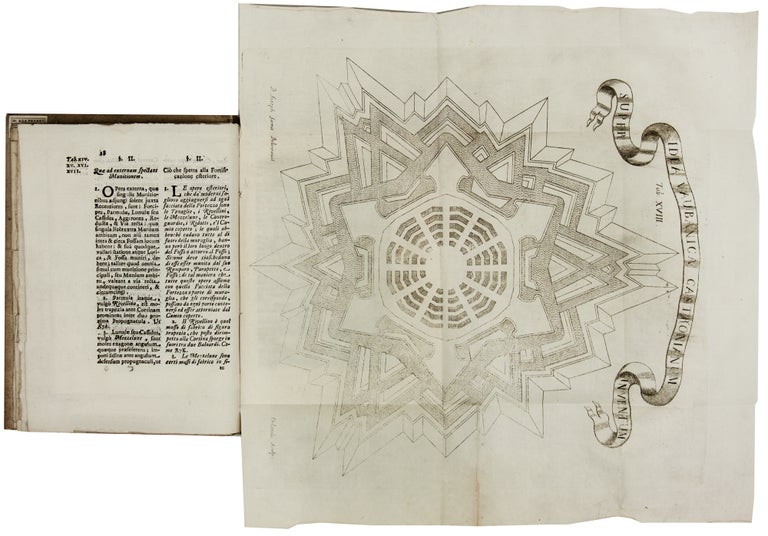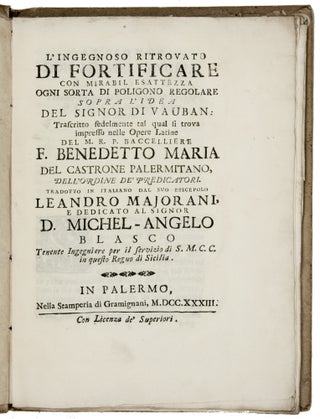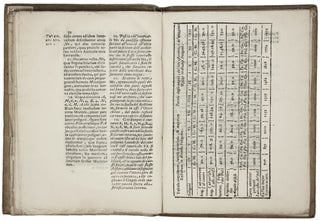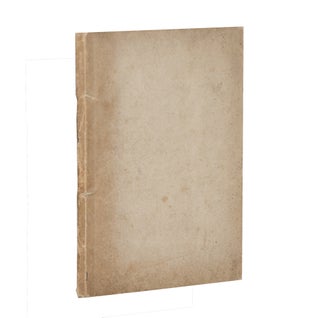L’ingegnoso ritrovato di fortificare con mirabil esattezza ogni sorta di poligono regolare sopra l’idea del signor di Vauban.
4to (22.5 x 16.5 cm), (8) pp., 1-52 pp. With 5 folding engraved plates (numbered Tab. XIV, XV, XVI, XVII, XVIII). The last plate, titled “Super Idea Vaubanica Castronianum Inventum,” is signed by Orlando. In carta rustica, deckled edges. Bookseller’s stamp (“Dr. Ada Peyrot”) and “Numero VI” in MS on front pastedown. Pp. 33-36 uncut. An excellent copy. The first separately published edition of a short tract in parallel Italian and Latin by the Italian mathematician Benedetto Maria Castrone on Vauban’s theory of fortification. Published in the same year that the city of Palermo (the place of this book’s publication) adopted Vauban’s regular polygonal trace, the treatise had originally appeared in Latin in the second appendix of Castrone’s Horographia universalis (1728). Castrone’s pupil, Leandro Majorani, translated the tract into Italian and dedicated the 1733 publication to Michelangelo Blasco (1697-1772), a military engineer, serving the Austrian Crown in Sicily. The five plates, reprinted from Horographia universalis, contain the original numeration (Tab. XIV-XVIII). Sébastien Le Prestre de Vauban (1633-1707) was one of the greatest military engineers of all times, who revolutionized fortification construction. Vauban’s designs were characterized by the use of mathematical principles and a fortification structure that included two walls, separated by a ditch—the fighting line and the safety line with polygonal bastioned towers, built to contain artillery within bombproof casemates and firing through portholes. The fifth plate depicts a typical Vaubanesque fortification with a polygonal trace and a two-wall system. The work of Vauban was well-known and esteemed in Sicily. In 1722, Vauban’s ideas were used in designing Palermo fortifications, whereas Vauban’s regular polygonal trace was adopted in 1733—the year this book was published. The author of the text, Benedetto Maria Castrone (or Castroni) (ca. 1668-1748), was a polymathic Dominican friar, who taught mathematics, philosophy, and languages at the Palermo monastery of S. Domenico. Castrone’s biographer defines the main thesis of the treatise in the following way: “Once certain parameters are known, such as the number of sides of the square that need to be fortified, as well as their length and the width of the angles formed by them, it is possible to obtain, with simple and unambiguous formulas, all the architectural characteristics. The work therefore was obviously of interest to technicians of the military genius” (Baldini in Treccani). According to Mira, Castrone later attempted to apply the method presented in this book to every type of building, but he never published the work. Castrone was clearly influenced by the work of another Dominican friar, architect, and military engineer Tomaso Maria Napoli (1659-1725), whose treaty on military architecture, entitled Breve trattato dell’architettura militare moderna, appeared in 1722. OCLC does not locate any copies of the book in the U.S. There are only two copies of Horographia Universalis in the U.S.: at Harvard and the Boston Public Library. * Not in Cockle; Riccardi, Biblioteca Matematica Italiana, I, 301.5; D'Ayala, Bibliografia militare-italiana antica e moderna, pp. 90-91; Baldini, “Castrone, Benedetto Maria” in Treccani; Mira I 204; Giuffrè, The Baroque Architecture of Sicily (2007).
Price: $0.00





